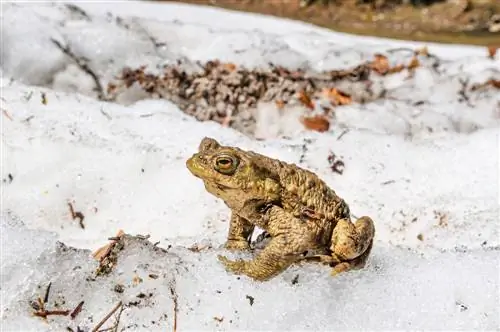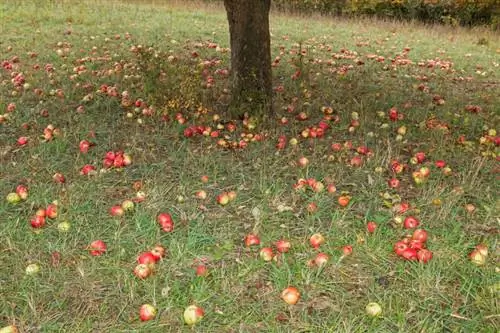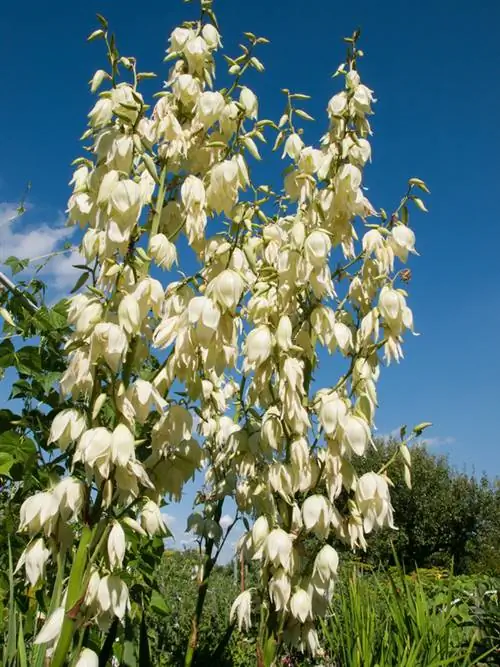- Author admin [email protected].
- Public 2023-12-16 16:46.
- Last modified 2025-01-23 11:22.
Animal-friendly hobby gardeners won't abandon a common toad while looking for a place to live. In just a few simple steps you can have a safe winter quarters ready to move into. This is what you can do to ensure that common toads overwinter safely in the garden.

How can you help common toads overwinter in the garden?
Common toads hibernate in hibernation without eating in frost-free locations up to 80 cm deep. You can dig holes in the garden, create piles of leaves, prepare compost heaps or create deadwood hedges to provide suitable winter quarters.
How does a common toad hibernate?
An exciting year for the common toad (Bufo bufo) comes to an end at the beginning of October. The amphibian heroically mastered a variety of dangers, escaping grinding car tires and hungry predators. Time is of the essence, because safe winter quarters must urgently be found before the first frost. This is how a common toad hibernates:
- When?: from late autumn to early spring (February/March)
- How?: in hibernation, completely motionless and not eating
- Where?: in frost-free locations up to a depth of 80 cm
Falling temperatures are putting common toads under pressure. The animals are cold-blooded amphibians. In contrast to animal species that are kept at the same temperature, such as dormouse or marmots, toads do not hibernate, but rather freeze. No common toad can escape this process. If the thermometer falls towards freezing point, winter torpor sets in - whether a place to overwinter has been found or not.
Which garden elements help common toads overwinter?
Hobby gardeners can do a lot for a common toad in need of housing. The focus as suitable winter quarters is primarily on these four garden elements, which can be quickly created in the natural garden:
- Holes in the ground: Dig frost-proof holes in the ground in wind-protected garden corners up to a depth of 80 cm
- Compost heap: Create compost, stop turning it from September onwards, cover with compost fleece in winter (€116.00 at Amazon)
- Leave the leaves lying around: Pile up autumn leaves in piles and cover them with conifers
- Deadwood hedge: Create a deadwood hedge from cuttings from trees and bushes
Word quickly gets around among the common toads about where a great winter quarters can be found. A pleasant side effect for the nature-oriented hobby gardener: In spring, an army of ravenous pest exterminators hops through the garden. At the top of a common toad's menu are maggots, spiders and snails.
Tip
The consistent avoidance of pesticides and mineral fertilizers makes the garden a refuge for many animals in need. A prime example is nettle manure. Diluted with rainwater, a decoction of nettles combats numerous diseases and pests. Is it any wonder that there are tons of native animals, fluttering butterflies and colorful beetles in this garden paradise?






